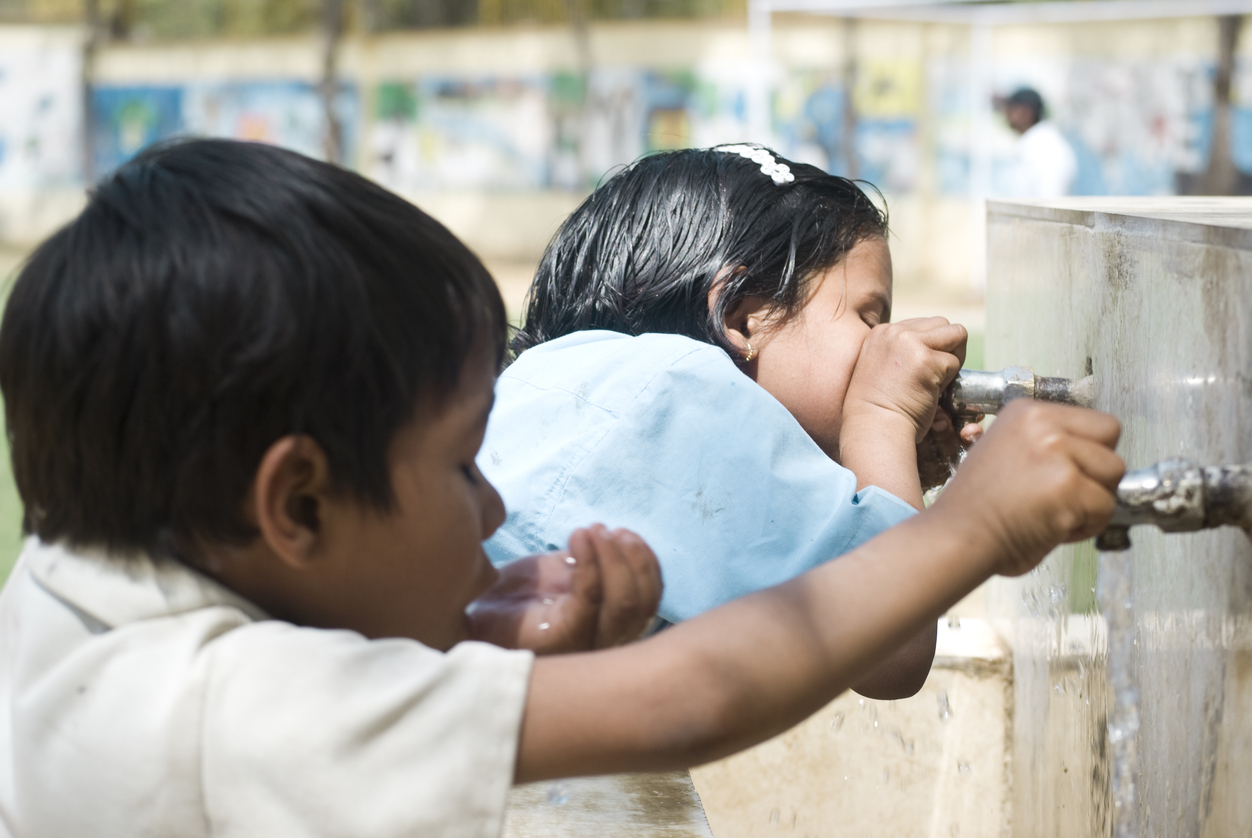
Water bells in schools don't help without infrastructure in place

Soon after Kerala began the practice of ‘water bells’ — specific breaks for students to drink water — Karnataka has followed suit. States like Telangana and Tamil Nadu too have planned a similar interval to address the common issue of inadequate water consumption by students.
Water bells, which was first introduced in Thrissur’s St Joseph’s Upper Primary School a few months ago, has become a hit among students in schools that have implemented it. The idea behind the move is to ensure students stay hydrated and don’t develop urinary tract infections.
Sheeba CD, headmistress, St Joseph’s Upper Primary School, says they planned the ‘water break’ following complaints from the parents of girl students about frequent infections and so introduced the breaks. “We have two water bells — one around 11:45 am and another during lunch at 1 pm. It has become a success,” she added.
At Mangaluru’s Indraprastha Vidyalaya, the bells have been ringing for three months now. The bells are rung thrice during the school hours — 10:35 am, 12 pm and 2 pm. Principal of the school, Jose MJ says the implementation of the water bell has brought about a change in the habit of the students from LKG to class 10.
“Earlier, the parents complained that the children used to take back home filled water bottles, not taking even a single sip from it. Now, that has changed. We also monitor if the students are drinking water during the water breaks,” he says. “With a rise in temperature, the students used to complain of headache and drowsiness. And we believed the consumption of water at regular intervals has addressed that issue.”
‘Urinary tract infection common among children’
Dr Benny Benjamin, consultant, paediatrician, Fortis Malar Hospital, says urinary tract infections are common among children. “The incidence of urinary infection is higher in girls because of a shorter urethra with easier access to bacteria from outside to the bladder. Studies show that stasis of urine in the bladder contributes to urinary infection,” he says. The tropical climate in south India adds to the causes of dehydration, he adds.
While he lauded the move of having water breaks, he also points out that passing urine as and when required is more important. “Students tend to avoid using toilets in schools due to hygiene issues. Holding back urine for long hours can predispose them to infections,” says the doctor.
Bells alone can’t achieve much
Water bells could be a great idea to implement in schools, where students often bring their own water bottles and their parents ensure the water is clean and drinkable. But, what about the students who don’t?
“The water bell can be the first step, but ramping up amenities like providing safe drinking water is the bigger initiative,” says Andrew Sesuraj of the Tamil Nadu Child Rights Watch, a child rights group. Therefore, he adds, every class should have a pot of boiled and filtered drinking water and the students should be allowed to drink water whenever they want to.
“There is a system in school when the student needs to seek permission from the teacher to drink water and use washroom. Sometimes, such requests are not approved since that would interrupt the class proceedings,” he expresses his concern.
Also read | Jobs, healthcare, drinking water top priorities for voters: Survey
Metros score low in drinking water study, but not Mumbai
A recently released Bureau of Indian Standards (BIS) study on drinking water quality found that metro cities like Delhi, Chennai and Kolkata rank at the bottom. It found that water samples from Chennai score low across several parameters including turbidity, odour, total hardness, chloride, fluoride, ammonia, boron and coliform. Mumbai alone topped the list among the big metros, implying a better quality of drinking water than others.
Coming to the access and the number of toilets in schools and availability of drinking water for children from lower income groups, the picture is all the more disappointing.
TS Padmapriya, chief executive, Sanitation First India, says that hydration is part of nutrition and goes hand in hand with sanitation and hygiene. She explains, “In almost 97% of the schools, the pipelines are rusted and leaky. Only 20% of children in schools bring their water bottles filled and among them, a good number of the students are low quality water. The quality of water provided in schools is also worse. Take the case of toilets, there are only two toilets in schools for 1,500 girls. During a break, how many of them can use them? For boys, the ratio of toilets is all the more alarming because in many schools, they think it is okay not to have toilets for boys and they are left urinating in open.”
Given these factors, Padmapriya adds water bells alone can do very little. “The idea is great, provided you are ticking all the boxes like safe drinking water, sanitation, soap and water to wash their hands after they use toilets and before sitting down for their mid-day meals,” she says.
Also read | With Siruvani level reduced, Coimbatore loses world’s 2nd tastiest water


